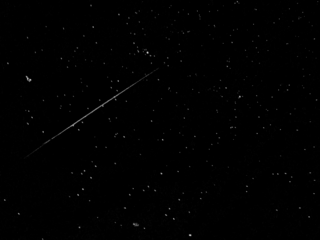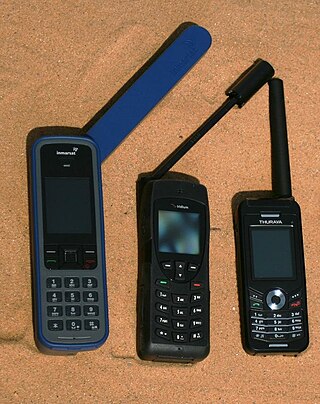
XM Satellite Radio Holdings Inc. (XM) was one of the three satellite radio (SDARS) and online radio services in the United States and Canada, operated by Sirius XM Holdings. It provided pay-for-service radio, analogous to subscription cable television. Its service included 73 different music channels, 39 news, sports, talk and entertainment channels, 21 regional traffic and weather channels, and 23 play-by-play sports channels. XM channels were identified by Arbitron with the label "XM".
TransOrbital is a California-based company which became the first private company granted permission by the U.S. government to explore, photograph, and land on the Moon. The company has been covered in over 2,000 news articles worldwide, and announced a sponsorship agreement with Hewlett-Packard in 2003. The company planned to launch the TrailBlazer lunar orbiter, which was proposed as the first privately-financed science mission to the Moon. The Trailblazer will provide live streaming video of the entire mission, pictures of Earth from space, detailed maps of the full Moon surface, photographs of Apollo landing sites including Apollo 11, the dramatic Earthrise ; video and a mission ending live HDTV video broadcast of the spacecraft as it "Barn-Storms" over the lunar terrain during its voyage.

FalconSAT is the United States Air Force Academy's (USAFA) small satellite engineering program. Satellites are designed, built, tested, and operated by Academy cadets. The project is administered by the USAFA Space Systems Research Center under the direction of the Department of Astronautics. Most of the cadets who work on the project are pursuing a bachelor of science degree in astronautical engineering, although students from other disciplines join the project.
Sirius XM Holdings Inc. is an American broadcasting corporation headquartered in Midtown Manhattan, New York City, that provides satellite radio and online radio services operating in the United States. The company was formed by the 2008 merger of Sirius Satellite Radio and XM Satellite Radio, merging them into SiriusXM Radio. The company also has a 70% equity interest in Sirius XM Canada, an affiliate company that provides Sirius and XM service in Canada. On May 21, 2013, Sirius XM Holdings, Inc. was incorporated, and in January 2020, SiriusXM reorganized their corporate structure, which made Sirius XM Radio Inc. a direct, wholly owned subsidiary of Sirius XM Holdings, Inc.
SkyTerra (SKYT), formerly Mobile Satellite Ventures, was a Reston, Virginia company that developed telecommunications systems that integrate satellite and terrestrial radio communication technologies into one system. In March 2010, the company was acquired by Harbinger Capital Partners and under the leadership of CEO Sanjiv Ahuja became part of a new company called LightSquared. The company placed its first satellite, SkyTerra-1, in orbit on November 14, 2010. LightSquared has since then went bankrupt and emerged from bankruptcy as Ligado Networks.
TerreStar Corporation (TSTR), formerly Motient Corp. and American Mobile Satellite Corp., was the controlling shareholder of TerreStar Networks Inc., TerreStar National Services, Inc. and TerreStar Global Ltd., and a shareholder of SkyTerra Communications.

COSMO-SkyMed is an Earth-observation satellite space-based radar system funded by the Italian Ministry of Research and Ministry of Defence and conducted by the Italian Space Agency (ASI), intended for both military and civilian use. The prime contractor for the spacecraft was Thales Alenia Space. COSMO SkyMed is a constellation of four dual use Intelligence, surveillance, target acquisition, and reconnaissance (ISR) Earth observation satellites with a synthetic-aperture radar (SAR) as main payload, the result of the intuition of Giorgio Perrotta in the early nineties. The synthetic-aperture radar was developed starting in the late nineties with the SAR 2000 program funded by ASI.
JSAT Corporation (JSAT) was the first private Japanese satellite operator, which owned the JSAT satellites, as well as operated and partially owned the N-Star with NTT DoCoMo. Its origins can be traced to the funding of Japan Communications Satellite Company (JCSAT) and Satellite Japan Corporation in 1985. Both companies merged into Japan Satellite Systems Inc. in 1993. In 2000 the company was renamed as JSAT Corporation and was listed in the First Section of the Tokyo Stock Exchange. On September 1, 2008, the company was merged into the SKY Perfect JSAT Group.
Horizons Satellite is a joint venture between Intelsat and SKY Perfect JSAT Group. Originally formed in 2001, pursuant to a memorandum of understanding between JSAT Corporation and PanAmSat for the launch of Horizons-1, it was renewed for Horizons-2. JSAT later merged into the SKY Perfect JSAT Group and PanAmSat was acquired by Intelsat, but the companies continued with the relationship, with the order for Horizons-3e. Both companies also launched a joint satellite, Intelsat 15/JCSAT-85, but instead of the equal share agreement of this joint venture, JSAT owns a specific payload of 5 transponders out of the 22 Ku band transponders of the spacecraft.
OmniSTAR is a satellite-based augmentation system (SBAS) service provider. OmniSTAR correction signals are proprietary, and a subscription must be bought from the OmniSTAR corporation to receive a subscription authorization. OmniSTAR uses geostationary satellites in eight regions covering most of the landmass of each inhabited continent on Earth:
- MSV-E, MSV-C, MSV-W
- AMSAT
- AORWH
- AOREH
- EUSAT
- IORHN
- APSAT
- OCSAT

Kagawa University is a national university in Takamatsu, Kagawa, Japan. The university was established in 1949 as a national university after the consolidation and reorganization of the Kagawa Normal School, the Kagawa Normal School for Youth and the Takamatsu College of Economics.
The Space Based Space Surveillance (SBSS) system is a planned United States Space Force constellation of satellites and supporting ground infrastructure that will improve the ability of the United States Department of Defense (DoD) to detect and track space objects in orbit around the Earth.
The DirecTV satellite fleet is a group of communications satellites located at various geostationary orbits that DirecTV uses for their satellite television service and HughesNet internet service. The "DirecTV" prefix in their names has been changed to "T".

Ligado Networks, formerly known as LightSquared, is an American satellite communications company.
LuxSpace is a European space systems contractor based in Betzdorf in Luxembourg. It was founded in November 2004 as a daughter company of OHB AG, and began operations in January 2005.

Mobile-satellite service is – according to Article 1.25 of the International Telecommunication Union's Radio Regulations – "A radiocommunication service
Horizons-1, also known as Galaxy 13, is a geostationary communications satellite operated by Intelsat and SKY Perfect JSAT (JSAT) which was designed and manufactured by Boeing on the BSS-601 platform. It has Ku-band and C-band payload and was used to replace Galaxy 9 at the 127.0° West longitude. It covers North America, Puerto Rico, Alaska, Hawaii and Mexico.
The JSAT constellation is a communication and broadcasting satellite constellation formerly operated by JSAT Corporation and currently by SKY Perfect JSAT Group. It has become the most important commercial constellation in Japan, and fifth in the world. It has practically amalgamated all private satellite operators in Japan, with only B-SAT left as a local competitor.
N-STAR c, is a geostationary communications satellite originally ordered by NTT DoCoMo and later fully acquired by SKY Perfect JSAT Group. It was designed and manufactured by Lockheed Martin, which acted as prime, developed the payload and did the final integration and testing, and Orbital Sciences Corporation, which supplied the satellite bus on the GEOStar-2 platform and procured the launch services. It had a launch weight of approximately 1,645 kg (3,627 lb), and a 15-year design life. Its payload is composed of 1 C-band, and 20 S-band transponders and its stationed in the 136° East longitude.

USA-292, also known as Advanced Extremely High Frequency 5 or AEHF-5, is a military communications satellite operated by the United States Space Force. It is the fifth of six satellites to be launched as part of the Advanced Extremely High Frequency program, which replaced the earlier Milstar system.






